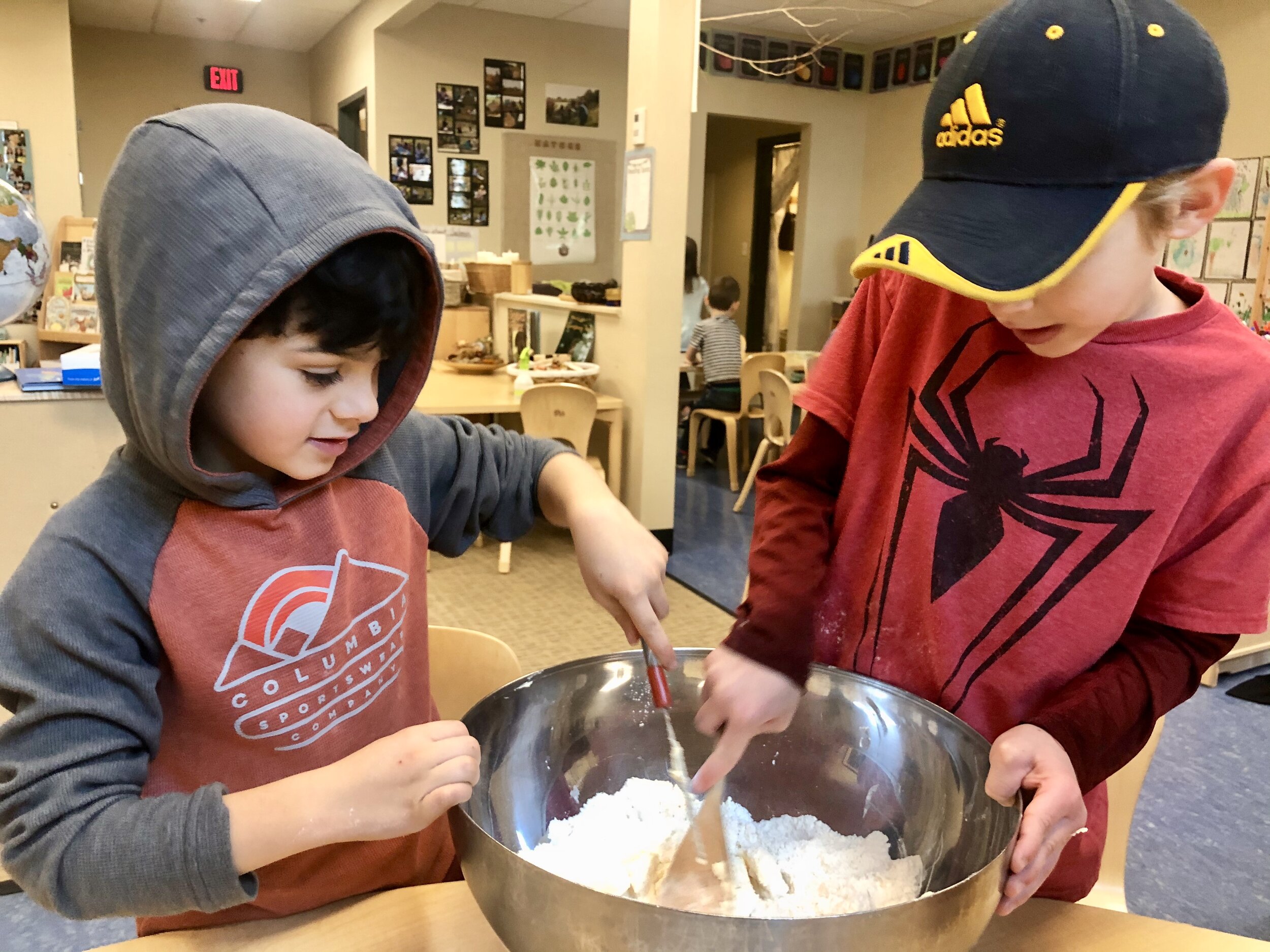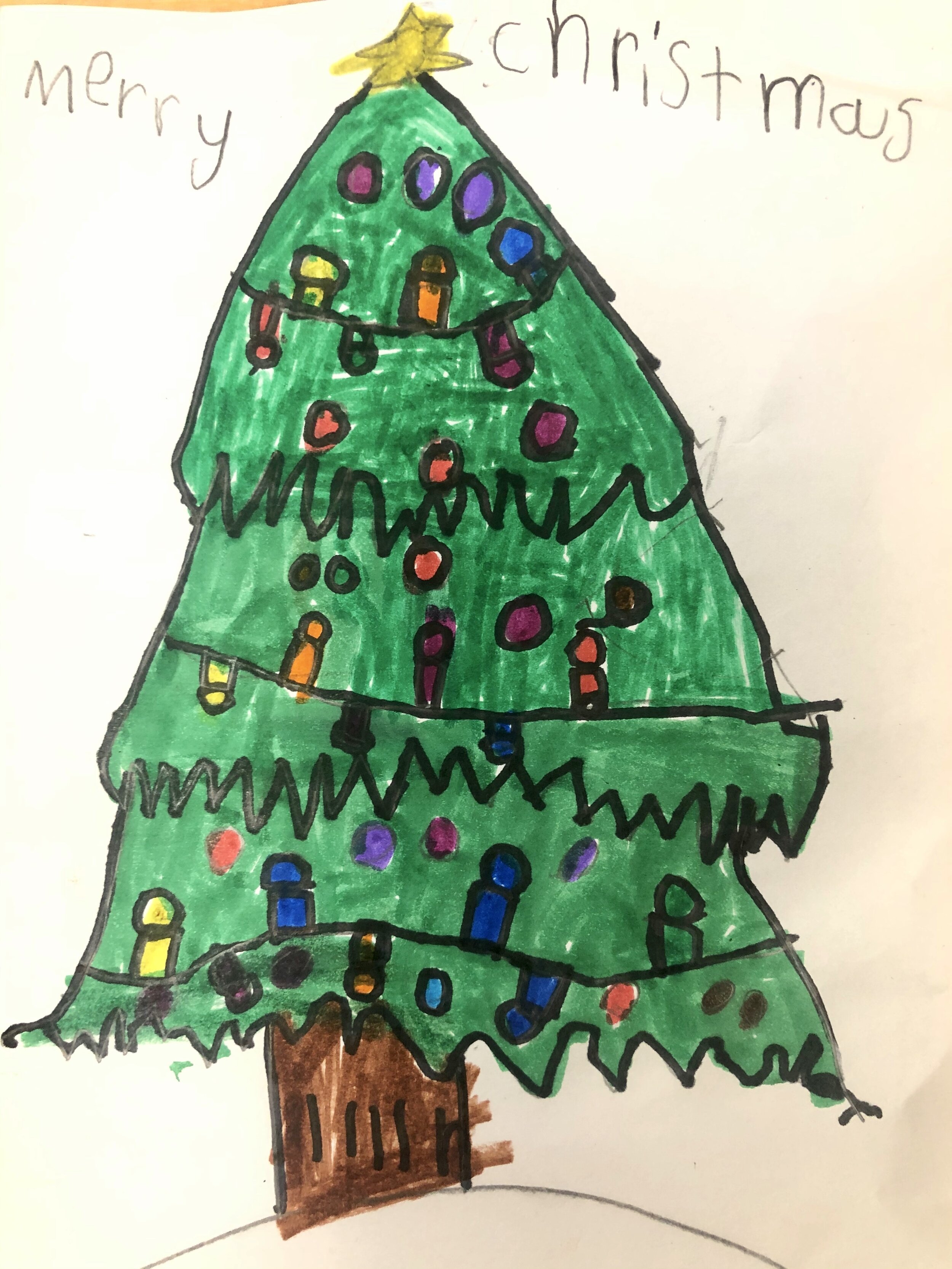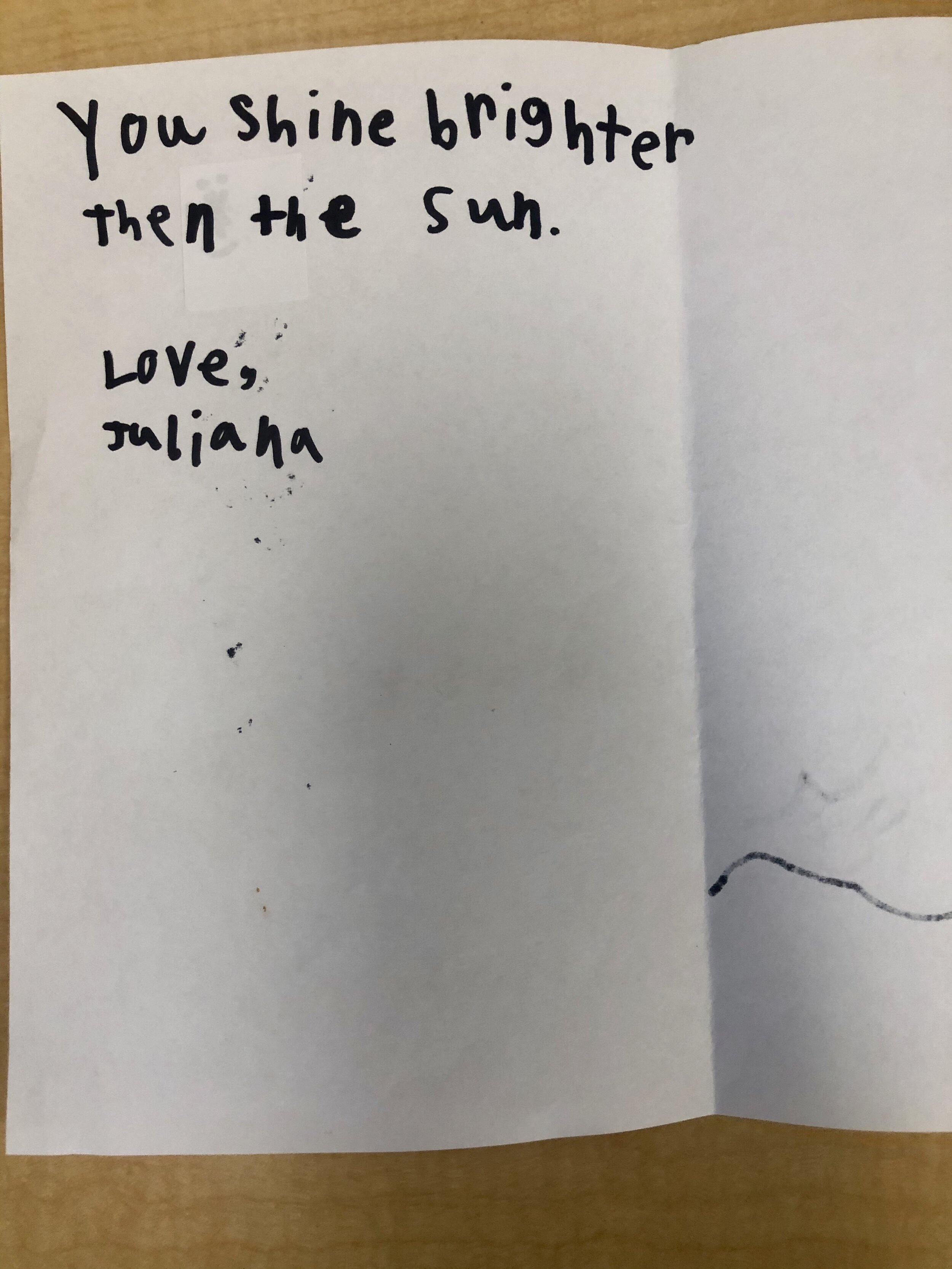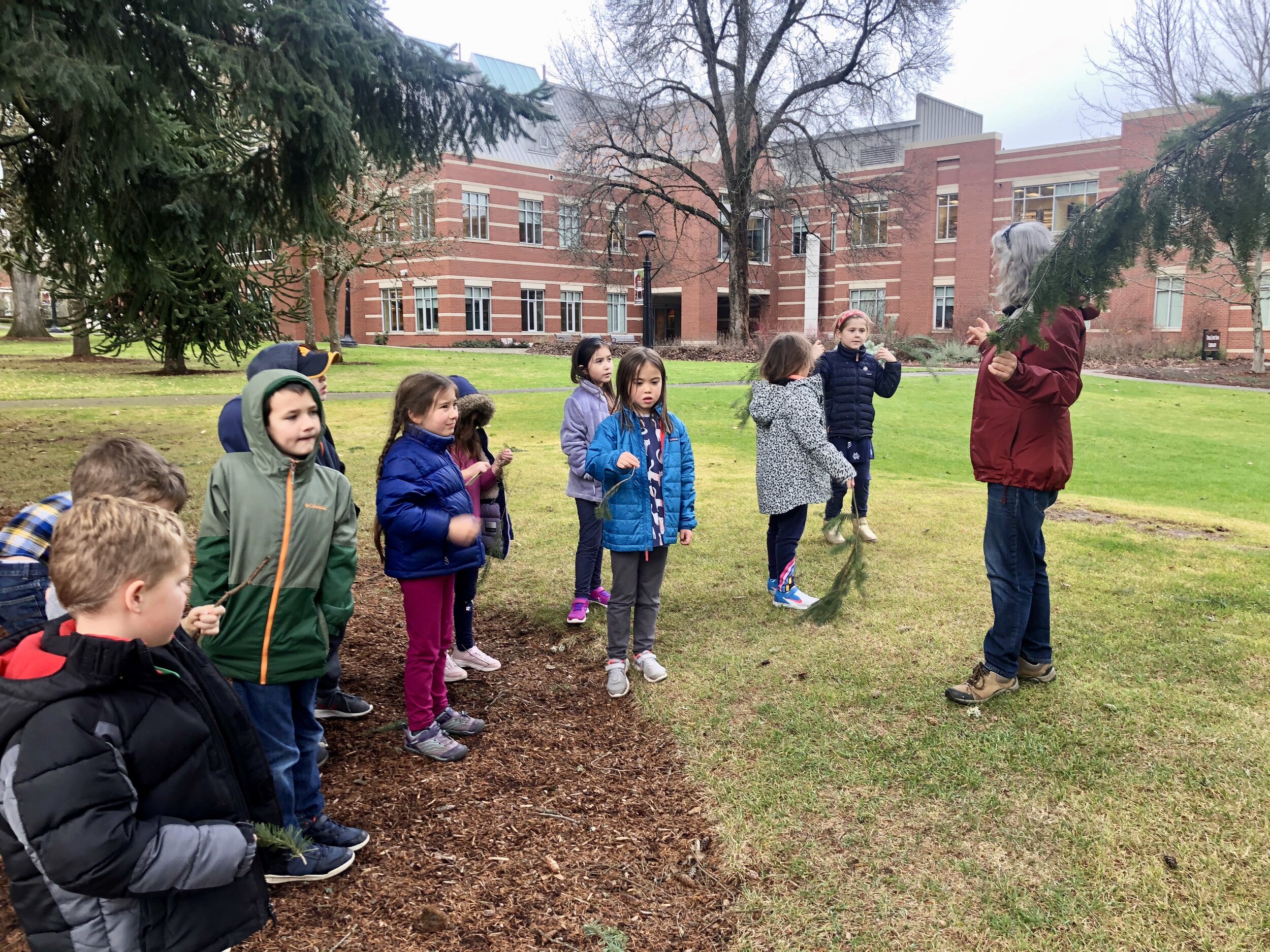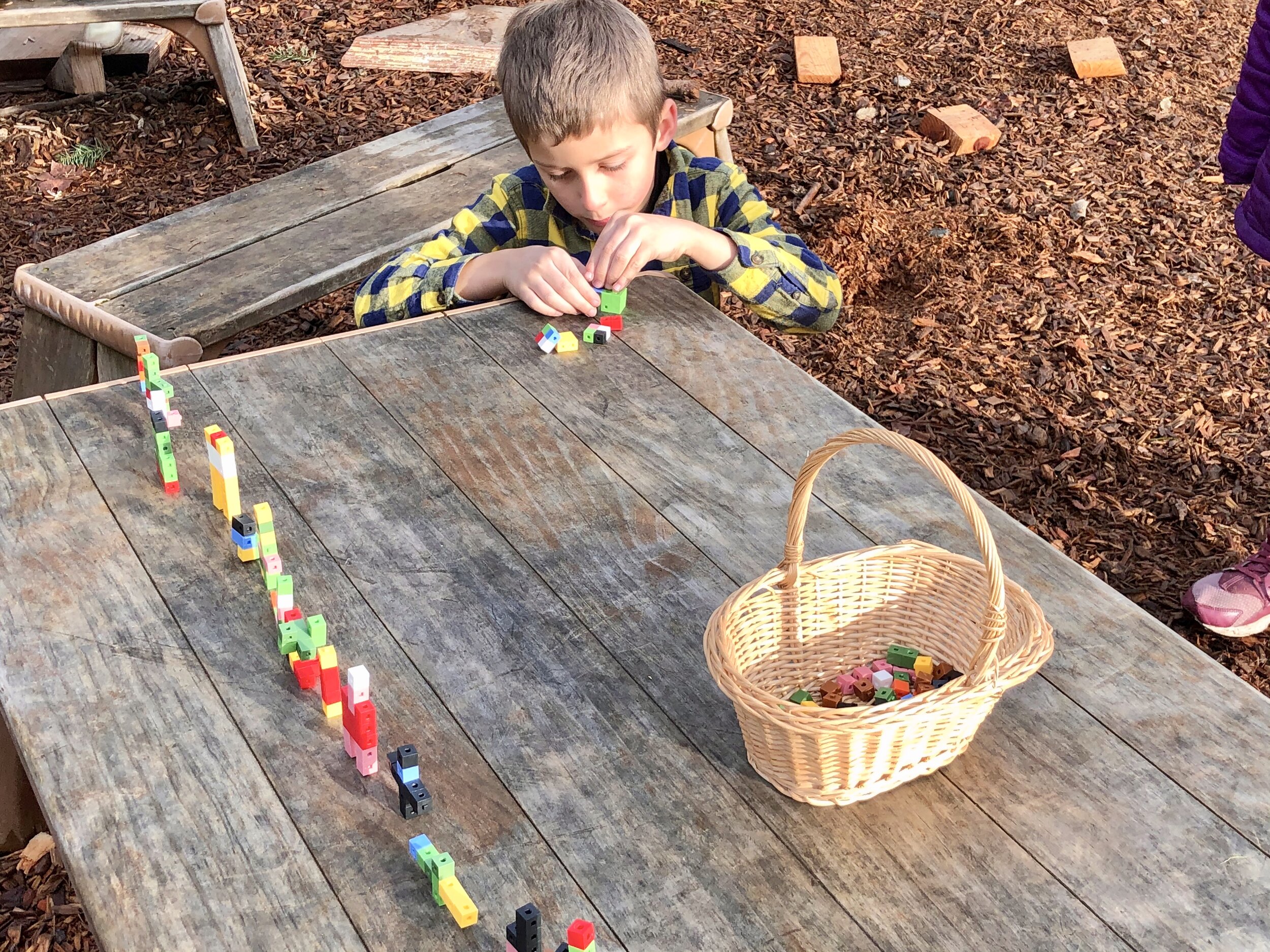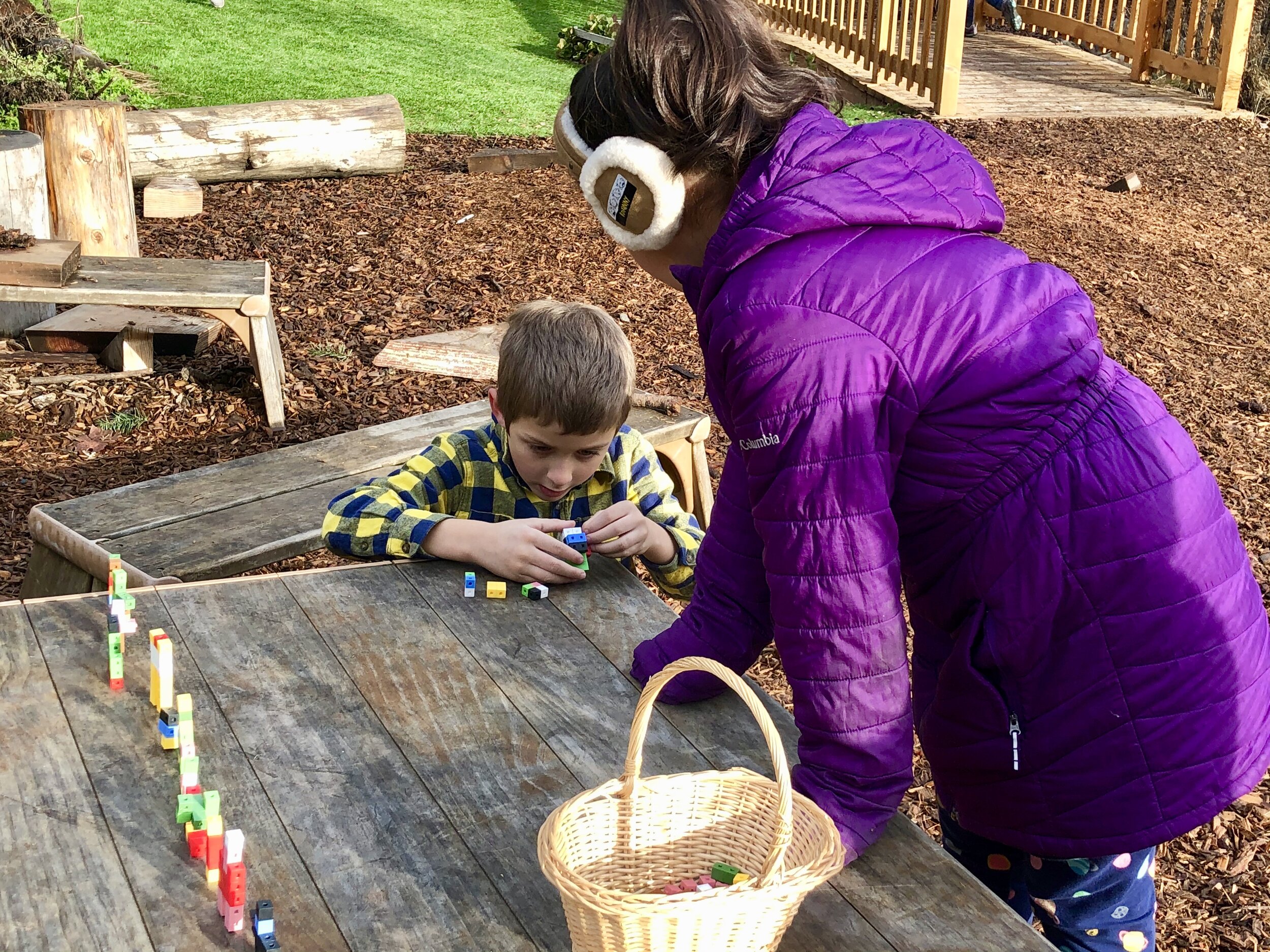Water PH and Coniferous Tree Identification
/ Early Learning CommunityThis week we learned more about the salmon life cycle and salmon migration patterns. We learned that in the wild some types of salmon lay 4000 eggs, but only two will grow up to be spawning adults. This week we tested the ph balance of our water. We learned about the ph scale that ranges from 0 to 14. We learned that alevin prefer a water ph that’s close to neutral. We used testing strips to find that the water in our tank was right around 6.5 or 7, just as it should be . We started with 180 eggs and only 9 have failed to develop so far. We are anticipating a release on January 7th.
This week we continued spreading joy and showing appreciation for the people around us. We talked about how our lives have been affected by so many different teachers at the ELC- preschool teachers, kindergarten teachers, aftercare teachers, Ms. Jessica, Ms. Debbie and Mr. Mark. Our students are fortunate to have so many teachers who care deeply about them and who help them grow. Students showed their appreciation by delivering cards and baking cookies. We also wrote cards and baked cookies for Marisela and Officer Kimberly. Marisela helps keep our classroom looking beautiful and Officer Kimberly helps keep us safe on campus and assists during our fire drills. Otter students also wanted to spread joy to children who are in the hospital. We wrote cards to cheer up children who will be spending the holidays in the hospital this year. We talked about how lucky we are to have healthy bodies and to get to spend the holidays at home. We helped the wildlife in our outdoor classroom by filling the bird feeders to ensure that the birds have enough to eat during this cold season as well.
Stacey, a biology and environmental studies professor at Pacific, came in to talk to us about trees this week. We learned about gymnosperms. Gymnosperms are plants whose seeds are not protected by fruit and their name means “naked seed”. Conifers are a type of gymnosperm. We examined the leaves from several different types of conifers. We learned that conifers can have needle-like leaves or scale-like leaves. We went on a campus walk to examine various species of conifers. Ms. Stacey told us about some plant adaptations that allow conifers to survive through harsh winter conditions. We also talked about how trees in the forest help salmon, and how salmon help the trees.
In our outdoor classroom this week students experimented with making maps, running a sushi stand (with sushi made from remeda materials), and creating three-dimensional characters using centimeter cubes. We also found a new kind of spider. We need to get some spider identification books to help us figure out what type of spider it is.









